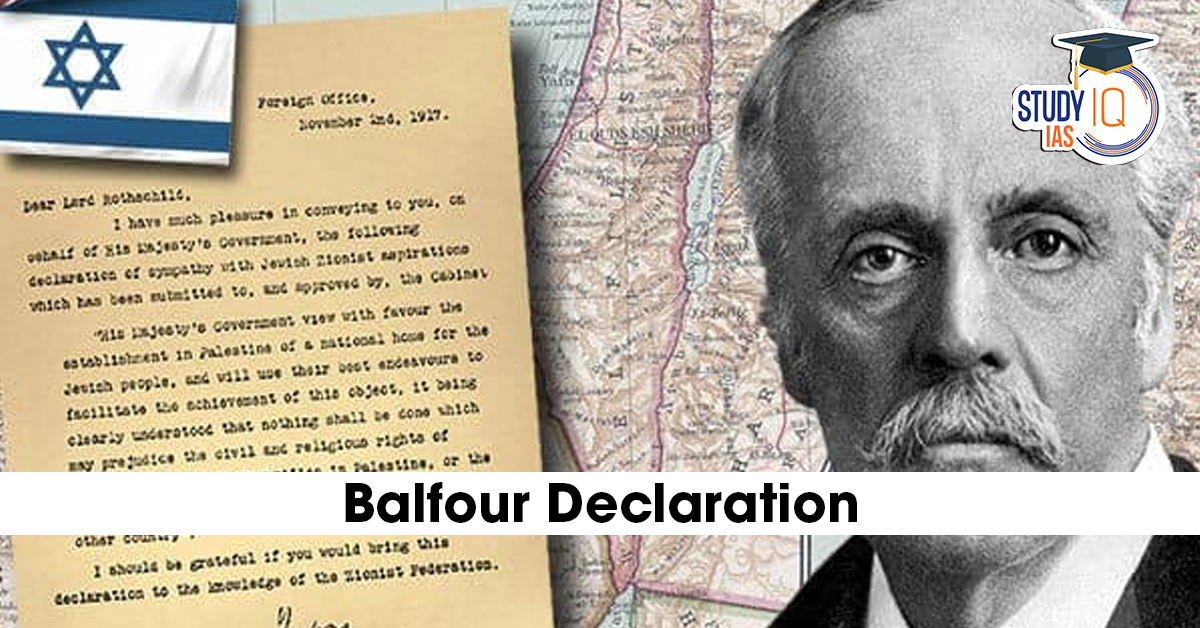Table of Contents
Context: The Balfour Declaration is back in focus as the U.K.’s possible recognition of Palestine—108 years after endorsing a Jewish homeland in Palestine.
About the Balfour Declaration (1917)
- Issued by the British government during World War I.
- Declared support for the establishment of a “national home for the Jewish people” in Palestine.
- Palestine was then part of the Ottoman Empire with a small Jewish minority.
Origins
- Came in the form of a letter from British Foreign Secretary Arthur Balfour to Lord Rothschild, a British Jewish leader.
- Officially published on November 9, 1917.
Historical Background
- Issued during World War I (1914–1918) as the Zionist movement was gaining momentum.
- Zionism aimed to establish a homeland for Jews facing persecution in Europe.
| About the Zionist Movement |
|
Why Did Britain Support the Idea?
- Strategic Interests: Palestine’s location was vital to protect the Suez Canal and the route to British India.
- Political Calculations: Hoped to win support of Jewish communities in Russia and the USA to strengthen the Allied war effort.
- Sympathy for Jewish persecution also played a role.

Why Is the Balfour Declaration Controversial?
- Britain promised the land it didn’t control – Palestine was under Ottoman rule.
- Contradicted previous British promises to Arabs in the McMahon-Hussein Correspondence (1915–1916), which promised Arab independence in exchange for support against the Ottomans.
- It recognised “civil and religious rights” of non-Jews but ignored their political rights.
- No Palestinian or Arab leader was consulted before the declaration was issued.
- Seen as the beginning of a long-standing conflict in the region.


 Birsa Munda Birth Anniversary 2025: Life...
Birsa Munda Birth Anniversary 2025: Life...
 Military Innovations of Afghans and Turk...
Military Innovations of Afghans and Turk...
 Self-Respect Movement, History, Objectiv...
Self-Respect Movement, History, Objectiv...

























